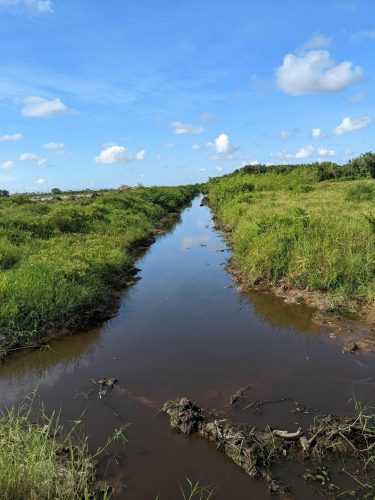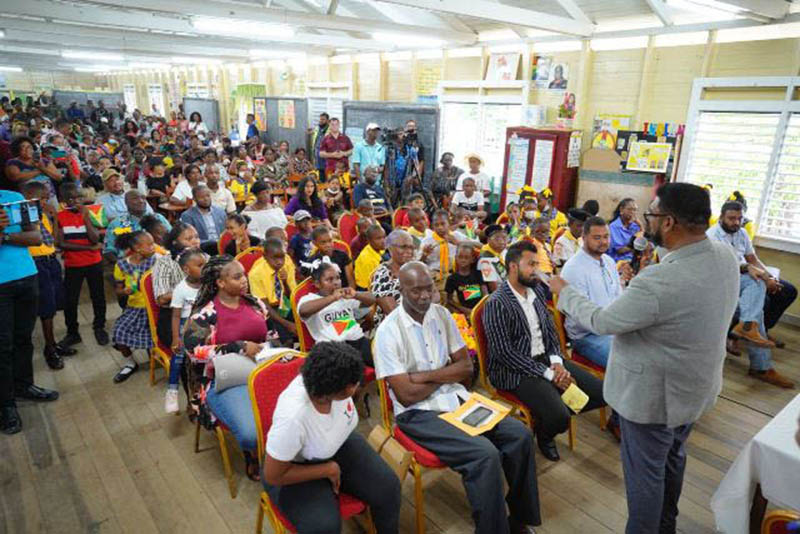Relieved at the end of the flooding that had seriously affected their farming pursuits for the better part of two years, the members of the Mocha Arcadia Multi-Purpose Agricultural Society are looking forward to returning to their land, livestock and livelihoods.
For more than a year, the Stabroek Business had been tracking the travails of a community that had earned a reputation for turning out a reliable farmers’ market. Their wide array of fruits, vegetables and meats had attracted regular patronage from miles around. Consumers habitually made their way to the widely popular Mocha Sunday Market from several considerably distant villages on the East Bank Demerara, west of the Demerara River and from Georgetown.

The lands that lie adjacent to the community have served as a source of income for those of its members who favoured both farming and self-employment. The vehicle of the cooperative, which they had created over time, had served as an adhesive that bound the community together, kept the agrarian spirit alive and generated the entrepreneurial atmosphere that was the genesis of the farmers’ market. Over the years, the farmers and their cooperative soldiered on, undaunted by either their limited means or by the incessant flooding and wild animals that threatened their livestock.
Reuben Jones, the loyal and long-suffering chairman of the cooperative that kept them together never seems to tire of repeating the story of the group’s travails, the flooding that rendered farms inaccessible for protracted periods, and the attendant loss of livelihoods. More recently, he has spoken of the dramatic worsening of the situation after infrastructure upgrading work in the area compromised the drainage system in parts of the community, all but bringing an end to the cooperative’s farming pursuits. Jones readily concedes that engaging the authorities on the matter of bringing remedial relief to the farmers had, over time, become a matter of considerable frustration.
While the remedial work associated with redirecting the flow of water away from the farmlands has already yielded some visible results, Jones appears to have adopted a wait-and-see posture in the matter of making a final determination as to whether or not the community and more particularly the farmers, have rid themselves of the problem. There is, he concedes, a concern that the flooding may return and that the residents, not least, the farmers, may simply not have the stamina to relive what has been an emotionally and materially draining experience. Their earlier losses, he said, have already pushed many of them to the edge, some of them having already invested “millions” in the project and, thereafter, having lost everything and turned to paid employment.
All, however, is not doom and gloom, Jones says. Some of the farmers have expressed an eagerness to return to the land.
The decidedly belated intervention of the National Drainage and Irrigation Authority (NDIA) to sort out the not uncomplicated drainage challenge had helped to deepen the frustration of the cooperative and its members. For supporters of the farmers’ market, it meant a loss of access to reasonably priced meats and vegetables. Jones himself returned to his own farm three days ago. He hopes that it will not be too long before he recommences cultivation.
The problem, as explained by Jones, had its origins in what appeared to be a hastily configured drainage system created as part of more elaborate infrastructural work in the community that included the widening of roads. In the process a key canal had been reduced to a drain and that, coupled with substantive blockages in the wider drainage system, seriously compromised the farmlands. The remedial work that has now been undertaken had been preceded by a number of animated meetings of the cooperative and, eventually, a letter to President Irfaan Ali.
In the final week of July, the Ministry of Housing and Water and the NDIA finally moved to undertake the corrective work. The resulting unimpeded flow of water, after a few hours, came as a relief to the community. Their farmlands, which had been inundated for more than 18 months, were finally clearly visible again. The corrective process is expected to be completed next month.
There may well be, Jones says, further reason for the farmers and their cooperative to be optimistic. He disclosed that work is due to commence on the North Barnwell Road, one of the main access roads to the farmlands. A $46.2 million contract for the rendering of the road was signed just over two weeks ago, though the Stabroek Business was unable to secure a timeline for the commencement of work. Jones says that there exists an understanding that residents of the community will be offered employment on the road rehabilitation project.




